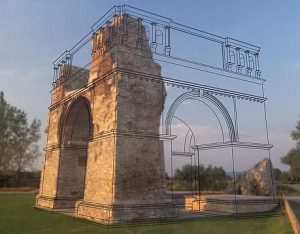
Art has always played a significant role in shaping our society and culture. The Renaissance period, known for its focus on artistic achievements, has left a profound impact on various aspects of our lives. One area where the influence of Renaissance art can be observed is in historical video games. In this article, we will explore how Renaissance art has made its way into the digital world and enriched the gaming experience.
Bringing History to Life
Video games offer a unique medium for interactive storytelling and immersion. Historical video games aim to recreate historical events and eras, allowing players to explore and experience the past. Renaissance art serves as a valuable resource for game developers and designers to accurately portray the ambiance and aesthetics of historical periods.
Renaissance art’s attention to detail, intricate designs, and use of vibrant colors have found a natural home in the digital realm. From the architecture of grand palaces to the fine details on clothing, the visuals in historical video games often bear striking resemblances to Renaissance paintings and sculptures. By incorporating these artistic elements, developers can create a more authentic and engaging experience for players.
The Role of Realism
Renaissance art is known for its pursuit of realism and an emphasis on capturing the human form with accuracy. This commitment to realism has influenced character design in historical video games. Characters are often portrayed with lifelike features, capturing the essence of Renaissance artistry.
Furthermore, the use of light and shadows in Renaissance art has also seeped into video game design. Illumination plays a vital role in setting the mood and enhancing the atmosphere in historical video games. By mimicking the techniques used by Renaissance painters, game developers can recreate the dramatic lighting effects and create visually stunning scenes.
Inspiration for Game Settings
Renaissance art features breathtaking landscapes and cityscapes that serve as a rich source of inspiration for the settings of historical video games. Whether it is the rolling hills of Tuscany or the bustling streets of Venice, game designers can draw upon these artistic representations to create immersive and captivating virtual worlds.
By incorporating architectural styles and landmarks inspired by Renaissance art, developers can transport players back in time and provide a glimpse into the awe-inspiring beauty of historical periods. These meticulous recreations not only allow gamers to explore new worlds but also help in preserving and appreciating the historical heritage.
The Power of Symbolism
Renaissance art is renowned for its use of symbolism and allegory. The inclusion of symbolic elements in historical video games adds depth and meaning to the narrative. Just like how Renaissance artists used symbols to convey ideas and messages, game developers can employ similar techniques to enhance the storytelling experience.
By embedding symbolic objects, motifs, or gestures within the game’s world, players can unravel hidden meanings and unravel intricate narratives. This deepens the players’ connection with the game and gives them a sense of intellectual stimulation, much like the appreciation of symbolism in Renaissance art.
Conclusion
The influence of Renaissance art in historical video games goes beyond mere aesthetics. It provides a foundation for developers to create visually stunning and historically accurate experiences. By incorporating Renaissance art elements, game designers can transport players back in time, fostering an appreciation for both art and history. Through the fusion of centuries-old artistic masterpieces with modern technology, Renaissance art continues to captivate and inspire gamers around the world.


